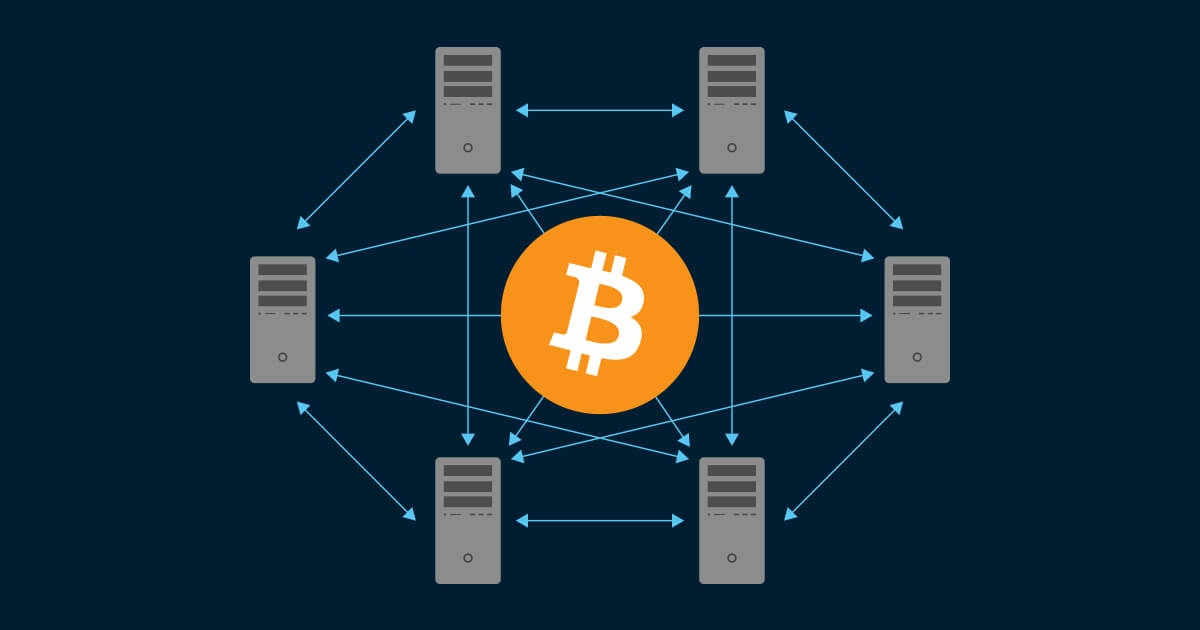What is Bitcoin? What seems like an easy question turns out to be a tough nut to crack. While the philosophical side of this question will always remain open to debate (although we proposed a detailed answer in the previous chapter), the technical side is simpler to tackle. That's what we will cover in this article: what is the Bitcoin network and how does it work.
As a starting point, we can say that Bitcoin is a global ledger: a database that keeps track of balances, or in other words how many units of Bitcoin everybody owns.
These units are issued by the Bitcoin protocol itself, which is code that lives online among the participants of the Bitcoin network. There is no centralized entity that issues Bitcoin, controls it or updates its ledger, Bitcoin is entirely decentralized.
Bitcoin is a digital record of transactions that is shared globally among a large number of network participants. As such, Bitcoin's ledger does not only exist once but thousands of times as identical, continuously updated copies that are stored by those participants.
You probably think that bitcoins can be sent and received within that network, but nothing actually moves. When bitcoins are "sent" or "received", all that is happening is an update made to Bitcoin's distributed and globally synchronized ledger. When a transaction is made, the units being transferred are simply removed from the sender's balance and added to the receiver's balance.
Owning a Bitcoin balance, which is called a public key, is done by knowing its corresponding private key. Bitcoin units that are associated with a private key at any point in time can be "unlocked" or "spent" by using the public and the private key together to create a unique digital signature that will indicate to the Bitcoin ledger that units are to be credited to a designated public key address.
So, when Bitcoin units are spent or received, what happens is simply an update of the Bitcoin ledger stating that the respective units have changed hands and are now linked to a new public address.
A thing of many faces
With this first overview in mind, we can already summarize that Bitcoin is a digitally distributed ledger making up a global network that has its own native asset.
It is worth noting that Bitcoin with a capital letter B is referring to the network itself, while bitcoin with a lower-case letter b is referring to the asset. Therefore, we can say that Bitcoin is a database, a transaction network and an asset all at the same time.
Bitcoin is often compared to traditional payment infrastructures like PayPal or Visa. While there are some similarities, the comparison is fundamentally flawed. It's true that Bitcoin is a network just like Visa or PayPal, but unlike them the Bitcoin network carries its own native asset, while Visa / PayPal rely on the US dollar - a money surrogate - to act as the unit of value within their own network.
To continue the comparison, neither PayPal's nor Visa's ledger is distributed. Their database is controlled and managed by the companies themselves, while Bitcoin's ledger is truly decentralized with no single entity having the power to exercise control over it.
These differences may be subtle to the casual observer, but they are important in the grand scheme of things. Bitcoin's anonymous founder, Satoshi Nakamoto, chose the terms wisely and carefully: In his white paper, he indeed described Bitcoin as a peer to peer electronic cash system.
In hindsight, he probably should have highlighted the term “cash” as it carries a precise meaning and purports to a distinct aspect within monetary theory: cash is defined as a base money, referring typically to a network's native asset.
Bitcoin being introduced as a cash system reinforces its fundamental difference to payment networks like PayPal or Visa that should correctly be labeled currency networks, as they handle a money surrogate and not the base money itself.
Because Bitcoin has been designed as a cash system with its own native base asset, it can be compelling to liken bitcoin the asset to something like gold, as the precious metal is also a base asset. However, the comparison ends to the fact that gold does not have its own inherent transaction network.
Therefore, bitcoin is a base asset as well as the native asset of the Bitcoin network.
With these defining features, Bitcoin can be considered a synthesis combining the best of all worlds. In that way, some people refer to bitcoin as pieces of super-gold flying inside an unstoppable PayPal.
Bitcoin's decentralized bookkeepers
We now understand that Bitcoin is a gold-type of money that lives in its own ledger-based transaction network. But if no one controls that network, how does it record transactions correctly and keep a clean accounting? Instead of a single entity doing that job, a multitude of network participants act as decentralized bookkeepers.
The miners
The first and most famous category of participants in the Bitcoin network are the miners. Their role is to aggregate new transactions that full nodes submit to the Bitcoin network into blocks, and add them to the Bitcoin blockchain (or in other words the network's transaction history).
They ensure that way that the distributed ledger is constantly maintained and that transactions are continuously executed. Without miners, no transactions would be processed on the Bitcoin network.
The full nodes
Besides the miners, the full nodes is another category of network participants that is of utmost importance to the Bitcoin network.
Their task is to verify and validate each new transaction that enters the Bitcoin network. They check them against the network's rules, and discard them in case of contradiction or add them to what is called the mempool if they check out. The mempool stores pending transactions that have been validated by full nodes, which miners then pick up to be executed and irrevocably added to the blockchain.
The light nodes
As their name suggests, light nodes are a simplified version of full nodes. While each full node keeps a complete version of the Bitcoin blockchain, light nodes only store a lightweight version of the ledger. They allow anyone to verify Bitcoin transactions without the heavy resources required by full nodes.
9 minutes|Pascal Hügli|Published 2024-04-05|Updated 2024-06-13





